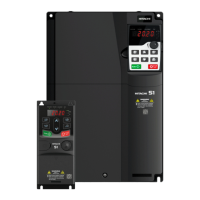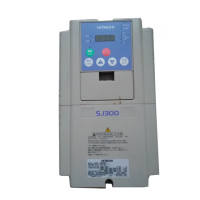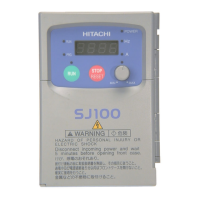S1 series standard inverter
-112-
Detailed parameter description
4: Torque-down V/F curve (2.0
nd
order)
5: Customize V/F (V/F separation)
Note: Refer to the parameter description of
P04.01 and P04.02.
Setting range of P04.14: 0.0%: (automatic) 0.1%–
10.0%
Setting range of 0.0%–50.0% (relative to rated
frequency of motor 2).
Motor 2 torque
boost cut-off
V/F frequency
point 1 of motor 2
Note: Refer to the parameter description of
P04.03–P04.08.
Setting range of P04.16: 0.00Hz–P04.18
Setting range of P04.17:0.0%–110.0% (rated
voltage of motor 2)
Setting range of P04.18: P04.16–P04.20
Setting range of P04.19: 0.0%–110.0% (rated
voltage of motor 2)
Setting range of P04.20: P04.18–P12.02 (rated
frequency of asynchronous motor 2) or P04.18–
P12.16 (rated frequency of synchronous motor 2)
Setting range of P04.21:0.0%–110.0%(rated
voltage of motor 2)
V/F voltage point
1 of motor 2
V/F frequency
point 2 of motor 2
V/F voltage point
2 of motor 2
V/F frequency
point 3 of motor 2
V/F voltage point
3 of motor 2
V/F slip
compensation
gain of motor 2
This parameter is used to compensate for the
motor rotating speed change caused by load
change in the V/F mode, and thus improve the
rigidity of the mechanical characteristics of the
motor. You need to calculate the rated slip
frequency of the motor as follows:
△f=fb-n*p/60
where fb is the rated frequency of motor 2,
corresponding to P12.02; n is the rated speed of
motor 2, corresponding to P12.03; p is the
number of pole pairs of motor 2. 100%
corresponds to the rated slip frequency △f of
motor 2.
Setting range: 0.0–200.0%
Low-frequency
oscillation control
factor of motor 2
In the V/F mode, current oscillation may easily
occur on motors, especially large-power motors,
at some frequency, which may cause unstable
running of motors or even overcurrent of inverters.

